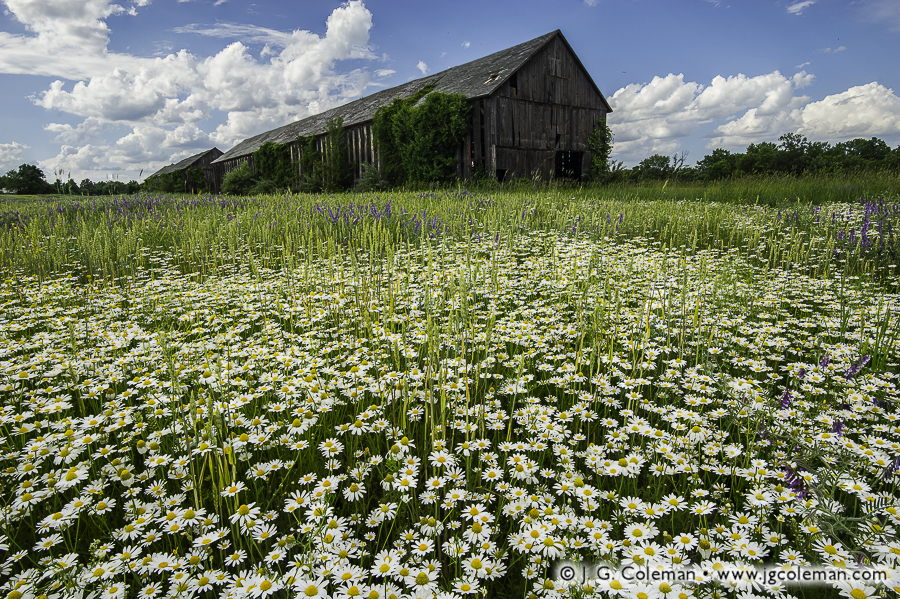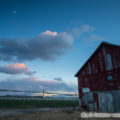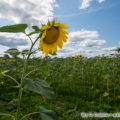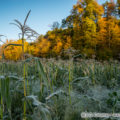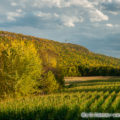
Tobacco sheds & wildflowers, Windsor, Connecticut
© 2016 J. G. Coleman
Beside creaky, derelict tobacco sheds besieged by prying vines, a brilliant mosaic of ox-eye daises, cow vetch, wheat and field grasses blankets an overgrown field in Central Connecticut’s waning Tobacco Valley.
By the mid-1800s, Connecticut had reached its peak level of deforestation in human history. As much as 70% to 80% of the state had been clear-cut, with a good deal of that acreage ultimately finding use as pastures, hayfields and croplands. But agriculture began a steady a decline from that point forward. Enormous swaths of farmland were abandoned as folks sought work in flourishing industrial cities or headed out west in search of new opportunities. Many towns throughout Connecticut had lost half of their population before 1900.
It’s no surprise that scenes such as this one, with fields and pastures growing wild and barns left to decay, would have been a familiar sight to folks living in Southern New England during the latter half of the 1800s. Most all of Connecticut’s modern forests, which now cover more than half the state, grew upon the deserted soil of those long-vanished farms.
Purchase a Fine Art Print or Inquire About Licensing
Click here to visit my landing page for “Yankee Farmlands № 68” to buy a beautiful fine art print or inquire about licensing this image.
Want to See More?
Be sure to check out all of the work in my on-going Yankee Farmlands project.

